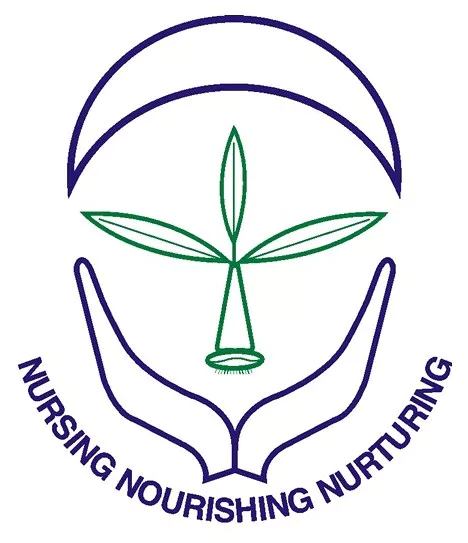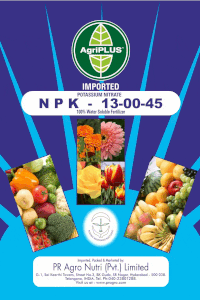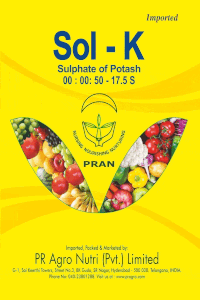Potassium
While potassium is not a constituent of any plant structures or compounds, it plays a part in many important regulatory roles in the plant. It is essential in nearly all processes needed to sustain plant growth and reproduction.Potassium plays a vital role in:
- Photosynthesis
- Translocation of photosynthates
- Protein synthesis
- Control of ionic balance
- Regulation of plant stomata and water use
- Activation of plant enzymes
Potassium increases crop yields :
- increases root growth and improves drought tolerance
- builds cellulose and reduces lodging
- helps translocate sugars and starches
- aids in photosynthesis and food formation
- produces grains rich in starch
- increases protein content of plants
- maintains turgor, reduces water loss and wilting
- helps retard crop diseases and nematodes
Potassium Deficiency Symptoms
Plants absorb potassium as the potassium ion (K+). Potassium is a highly mobile element in the plant and is translocated from the older to younger tissue. Consequently, potassium deficiency symptoms usually occur first on the lower leaves of the plant and progress towards the top as the severity of the deficiency increases. One of the most common signs of potassium deficiency is the yellow scorching or firing (chlorosis) along the leaf margin. In severe cases of potassium deficiency the fired margin of the leaf may fall out. However, with broadleaf crops, such as soybeans and cotton, the entire leaf may shed resulting in premature defoliation of the crop.Potassium deficient crops grow slowly and have poorly developed root systems. Stalks are weak and lodging of cereal crops such as corn and small grain is common. Legumes are not strong competitors for soil potassium and are often crowded out by grasses in a grass-legume pasture. When potassium is not sufficient, winter-killing of perennial crops such as alfalfa and grasses can occur. Seeds from potassium deficient plants are small, shriveled, and are more susceptible to diseases. Fruit is often lacking in normal coloration and is low in sugar content. Vegetables and fruits deteriorate rapidly when shipped and have a short shelf life in the market.
Sources Of Potash
Material
Chemical Formula
N
P2O5
K2O
S
Mg
Potassium chloride
KCl
60 - 62
Potassium sulfate
K2SO4
50 - 52
18
Potassium magnesium sulfate
K2SO4 - 2MgSO4
22
22
11
Potassium nitrate
KNO3
13
45
Potassium sodium nitrate
KNa(N03)2
15
14
Potassium hydroxide
KOH
83
Potassium carbonate
K2CO3
<68
Mono Potassium Phosphate
KH2PO4
52
34
Potassium poly phosphates
K4P2O7
40 - 60
22 - 48
Potassium meta phosphate
KPO
55 - 57
38


